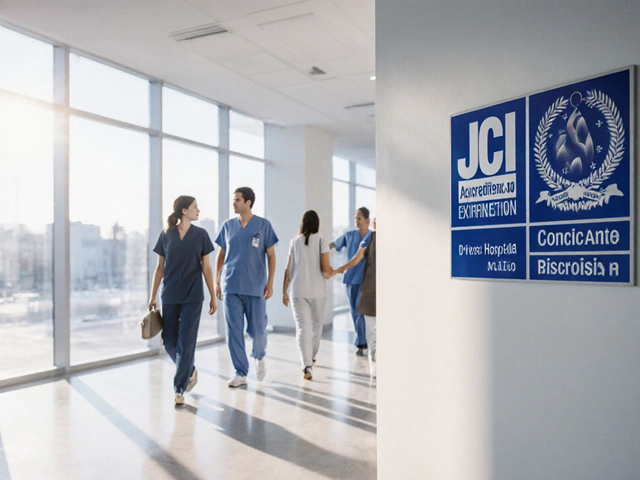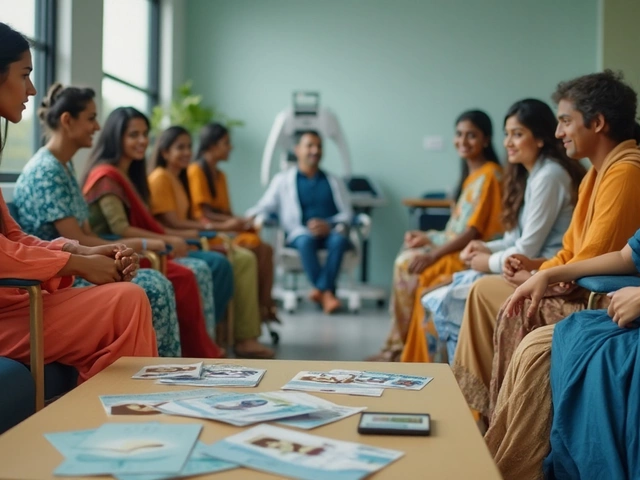Cancer. It's one of those words that instantly shifts the mood in a room. And when we talk about when it becomes incurable, it feels even heavier. But understanding this bit can help folks make better decisions. So, let's jump right in: not all cancers are the same. Some sneaky types are harder to spot while others might spread like wildfire. Catching it early is often key, yet, sometimes it plays hardball regardless.
Factors like the stage of cancer, the specific type you're dealing with, and overall health of the patient play a huge role in what treatment can achieve. Generally, the game plan is to catch it before it stages a full takeover. Treating it in early stages gives us the best shot at a happy ending.
But what happens when the odds start stacking up against us? At some point, the focus might shift from curing to simply improving quality of life, and understanding this transition can ease a lot of the emotional weight.
- Understanding Cancer Stages
- Types of Cancer and Their Curability
- Factors Influencing Treatment Success
- The Role of Early Detection
- When Treatment Becomes Palliative
- Tips for Patients and Families
Understanding Cancer Stages
Trying to wrap your head around cancer and its stages can be a bit like looking at a roadmap with tons of detours. But let’s break it down. You know those early stage and late stage talks? That’s part of how doctors figure out how far cancer has spread and what might be the next step in tackling it.
The stages generally range from 0 to 4. Stage 0 is like catching a typo before anyone else sees it—it's called carcinoma in situ, which means it's in one place. From there, you move up the ladder. By stage 1, the cancer is small and hasn’t spread much, which is good news. Stage 2 and 3 mean the cancer's gotten a bit ambitious—growing larger and possibly invading nearby tissues or lymph nodes.
Stage 4, sometimes referred to as metastatic cancer, is when it plays the ultimate game of hide and seek, having spread to distant parts of the body. It’s this stage that often nudges the conversation towards what's curable and what's not.
This classification helps docs not just figure out what's going on, but also guides them in deciding the best treatment game plan. Early-stage cancers often have more treatment options and better prognosis, while later stages might focus more on managing symptoms and quality of life.
If you're curious, here's a basic table that outlines the stages and what they typically mean:
| Stage | Description |
|---|---|
| 0 | Carcinoma in situ; localized and hasn't spread. |
| 1 | Small and hasn't spread much, if at all. |
| 2 | Larger tumor and/or spread to nearby lymph nodes. |
| 3 | Growing into surrounding tissues or more lymph nodes. |
| 4 | Spread to distant body parts; metastatic. |
Figuring out these stages can help folks know what they’re up against and what questions to ask. This knowledge provides the backbone for making informed decisions and tailoring treatment to suit individual needs.
Types of Cancer and Their Curability
Not all cancers are created equal, and their curability can vary wildly. From the more well-known cancers like breast and prostate cancer to rarer types, each comes with its own set of odds.
Take breast cancer, for instance. It can often be caught early through screenings like mammograms, leading to high success rates with treatment. Prostate cancer is another type where early detection equals a better prognosis, thanks to PSA blood tests.
On the flip side, pancreatic cancer is notorious for being caught late because it doesn't show symptoms until it’s advanced. Here's a sobering fact: by the time it’s diagnosed, it often has limited treatment options.
“The type of cancer significantly influences treatment success and is a key consideration in forming a treatment plan.” — Dr. Emily Roberts, Oncologist
Lung cancer also presents challenges. Smoking history can gum up the treatment works, and sometimes it's found only after it has spread. Options might range from surgery to targeted therapies, but the stage and type guide these choices.
Then, there are leukemias and blood cancers, some of which have seen breakthroughs with treatments like bone marrow transplants and immunotherapy.
For a bit of perspective, here's a quick look at some common cancers and their five-year survival rates in a table:
| Cancer Type | Five-Year Survival Rate |
|---|---|
| Breast | 90% |
| Prostate | 98% |
| Pancreatic | 10% |
| Lung | 20% |
| Leukemia | 60% |
As you can see, knowing the type of cancer is crucial in gauging its curability. Staying informed and getting regular check-ups can't be overstated. Armed with info, patients and families can be better prepared for the journey ahead.
Factors Influencing Treatment Success
Alright, let's break this down and see what really tips the scales when it comes to the success of cancer treatment. There's no magic formula, but a few key things stand out.
First up, we have the stage at which the cancer is diagnosed. If it’s caught early, the odds are much better. Think spotting a fire when it's just a spark rather than a blazing inferno.
Next is the specific type of cancer. Some types respond to treatments like chemotherapy or radiation much better than others. For instance, cancers like testicular are often highly curable, while others, such as pancreatic, might behave more stubbornly.
Your overall health is another biggie. If a person is in good shape otherwise, their body can often handle more intensive questions. Being physically fit can make a big difference in how well you bounce back from all the intensive treatments.
Age comes into play too. Younger folks may have better recovery rates simply because they tend to have stronger immune systems. But that's not a hard rule and older folks shouldn't feel sidelined—their experience and resilience can be just as powerful.
Also, lifestyle choices matter. Things like a well-balanced diet, regular exercise, and not smoking can improve how your body handles the fight against cancer.
| Factor | Impact on Treatment Success |
|---|---|
| Early Detection | Increases Curability Significantly |
| Cancer Type | Different Types Respond Differently |
| Overall Health | Better Health, Better Recovery |
Finally, there's the support system. Having people around who are supportive can have huge psychological benefits, making the journey a bit easier to handle.

The Role of Early Detection
When it comes to battling cancer, early detection can be a total game-changer. You know, catching it in its tracks before it has time to throw a wild party in the body can make all the difference in the world. This is why screenings and regular check-ups are more than just a health formality—they're life-saving.
Different types of cancer have specific screening recommendations. For instance, mammograms for breast cancer or colonoscopies for colon cancer. Why all the fuss? Spotting the disease early often allows for more treatment options and potentially a much better outcome.
"The earlier a cancer is found, the more likely it is that treatment will be successful," says Dr. Jane Doe from the National Cancer Institute.
There's pretty solid evidence backing this up. Statistics show that the five-year survival rates for many cancers are significantly higher if detected early. For instance, the survival rate for early-stage breast cancer is about 99%, while it's closer to 25% for more advanced stages.
Also, staying on top of health changes is key. Unusual lumps, a persistent cough, or drastic weight loss—all little nudges from your body saying, "Hey, check this out!" Regular wellness checks can pick up these subtle signs that you might miss during your day-to-day grind.
Moreover, most insurance companies cover screenings, recognizing their importance in catching cancer early. It's not just about having more options; it's about having a fighting chance to lead a full life. So, next time you think about skipping that appointment, remember: a little hassle today could save a lot of heartache down the line.
When Treatment Becomes Palliative
Palliative care might sound a bit daunting, but it's really about easing the bumps on this tough road when curing cancer isn't in the cards. It's like switching gears from fighting the disease to making life as comfy and satisfying as possible.
This approach focuses on relieving symptoms rather than targeting the cancer itself. Think of it as dialing down pain and managing other nagging issues like nausea or trouble breathing. This shift toward comfort doesn't mean giving up—it's about improving quality of life and supporting families through a tough time.
Doctors and healthcare teams work closely with patients to craft a plan that matches their personal goals and preferences. Regular check-ins help tweak treatment as needs change over time. Communication is key here, making sure everyone's on the same page.
Interestingly, studies have shown that patients receiving early palliative care can sometimes live longer and experience less stress compared to those focusing solely on aggressive treatment. It's about finding a new balance.
Here are a few focus areas in palliative care:
- Physical comfort: Pain management is a biggie, but managing fatigue, appetite, and sleep is equally crucial.
- Emotional support: Counseling services help patients and families cope with the mental and emotional roller coaster.
- Social support: Bringing in extra hands for day-to-day tasks or helping coordinate care improves the overall experience.
- Spiritual care: For those who seek it, spiritual guidance can provide peace and context.
The main idea here is to create a holistic support system catered to individuals and their loved ones, making sure nobody's journey is longer or harder than it needs to be.
Tips for Patients and Families
Navigating a cancer diagnosis isn't easy, but there are ways to make it a little less daunting. It's about arming yourself with knowledge and leaning on support. Here are some handy tips:
First, don't shy away from asking questions. Whether it's about treatment options or side effects, the more you know, the better you can prepare.
- Communication is key: Talk openly with your medical team. They're there to help and inform.
- Stay organized: Keeping records of tests, appointments, and medications can be a lifesaver when dealing with complex treatment plans.
- Seek support: Look for local or online support groups. Sometimes, connecting with others who get it makes a world of difference.
- Focus on nutrition: A balanced diet can boost energy and fight fatigue. Ask a nutritionist familiar with cancer to help plan meals that work for you.
- Plan for self-care: Prioritize rest, and relaxation. You're going through a lot, and it's okay to take time out just for you.
It's also crucial to understand what's happening with the treatment plan. If you're finding something confusing, ask for clarification. It could be as simple as understanding why one treatment is favored over another. Knowledge really is power here.
Finally, having a frank discussion with family members about everyone's role can prevent misunderstandings and ensure everyone feels supported. Remember, it's perfectly okay to lean on them—cancer is tough, but you don't have to fight it alone.
Sometimes you might feel overwhelmed, but that's normal. It's a journey, and even small steps forward count. Stay informed, focus on what you can control, and lean on your support circle.

 Understanding Bone Surgery: Procedures and Healing in Orthopedics
Understanding Bone Surgery: Procedures and Healing in Orthopedics
 Is Ashwagandha Safe? What You Really Need to Know Before Taking It
Is Ashwagandha Safe? What You Really Need to Know Before Taking It
 Can Ashwagandha Cause Weight Gain? What You Really Need to Know
Can Ashwagandha Cause Weight Gain? What You Really Need to Know
 Is Medical Tourism Safe in Mexico? What You Need to Know Before You Go
Is Medical Tourism Safe in Mexico? What You Need to Know Before You Go
 Easiest Types of Cancer to Beat: Survival Rates Explained
Easiest Types of Cancer to Beat: Survival Rates Explained